Tool Storage Systems for Organizationally Disadvantaged Contractors
This page may contain links to Amazon.com or other sites from which I may receive commission on purchases you make after clicking on such links. Read my full Disclosure Policy
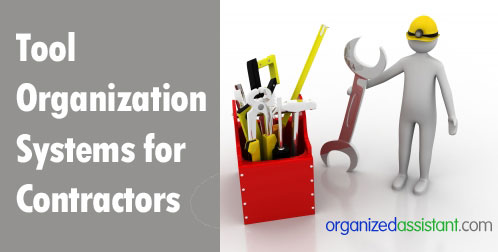
Our guest this week is Michael Chotiner from Home Depot. He’s got a great idea for a market you may not have considered, along with some great tips and photos to help you choose the best organizing products for your clients. I just know you’ll find his article interesting!

If there’s any group that’s a prime target for professional organizing help, it’s remodeling contractors. While many of these hardworking folks get into the business because they have “smart hands” and like to work with them, it can be a challenge to get any “real work” done while bidding new jobs, managing a crew, ordering supplies and materials, doing the books, and keeping the tools and truck in shape. Modular tool storage systems can go a long way toward keeping related tools and accessories for specific jobs organized, transportable and secure.
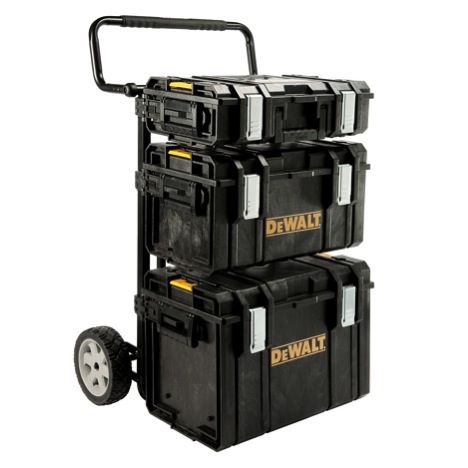
The Dewalt Tough System is one of a number of modular tool storage systems designed for professional tradespeople.
To help small contractors get organized and work efficiently, you’ve got to understand how they go about their work. Take my friend Jeremy, for example. He’s an architect and has a small contracting business on the side. Our daughters are best friends, and Jeremy and I bonded over our mutual interests in construction and folk music.
When he has contracting work, Jeremy hires subcontractors and day laborers. One day he called me to say that he had a crew starting the next day on a basement remodeling project. The owner insisted on having a native English-speaker supervising at all times, but Jeremy had too many other things going on to be on the site.
I said yes. It’d be nice to help Jeremy out and get away from my computer screen for a few days. I wasn’t sure what tools and supplies to bring to the job. He didn’t have much time to talk to me about it on the phone. I packed up a few basic tools of my own and hoped for the best.
When I met Jeremy at his office the next morning, he handed me the keys to his pickup and a large wad of cash. He said, “Most of what you’ll need today should be in the truck, but buy whatever you can’t find. There’s a Home Depot about 15 minutes from the site. Try to get the demo done today.”
When I opened up the back of the truck and saw the chaos, I knew it was going to be a long day.
What Professional Contractors Need
Pros need more than toolboxes to manage their tools efficiently. They need systems to:
- Protect tools from damage, dust and moisture
- Organize specific tools along with related accessories and supplies near at hand
- Use available storage space efficiently
- Permit easy access to tools while preventing loss and theft
- Facilitate transport from workshop to work vehicle to jobsite
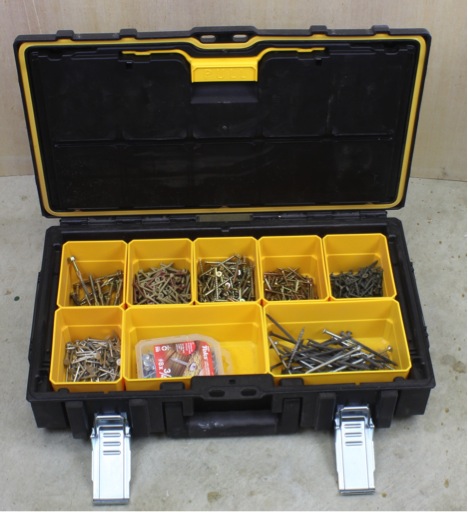
Stacking cases of different sizes and divider inserts facilitate storing and transporting tools and related supplies together.
It’s always best to store power tools in hard cases to protect them from dents, dings and dirt. Plastic cases are better than metal, which tend to rust. Many pro-grade tools are sold with a carrying case designed to hold the tool, the power cord or accompanying battery and charger, along with a few accessories like a chuck key or wrench needed for changing bits. But the come-with cases don’t usually provide enough space for packing in typical accessories and supplies related to the use of the specific tool or job. Tool cases of different sizes and shapes are hard to stack efficiently on shelves or securely in a work truck. Individual tool cases can usually be carried only one or two at a time, which means many trips from the truck to the work site, making setup and cleanup take quite a long time.
Storage Systems for Pros
A number of tool manufacturers offer modular storage systems that address the needs and habits of professional tradespeople. The best systems include:
- A set of hard plastic boxes with lids and identical footprints in varying depths to accommodate most portable power tools of different shapes and sizes
- An assortment of optional inserts designed to cradle tools and accessories of various shapes inside the box, and small containers with lids that can be used for storing other small parts typically used with the tool
- At least one drawer module with configurable dividers that facilitates storing small, flat hand tools, abrasives and fasteners
- Handles that allow each case to be carried as luggage or with two hands like a laundry basket
- A latching system that allows modules to be stacked and locked together
- A mating dolly and/or hand truck that facilitates moving stacked modules to and from a worksite
- Features that facilitate locking individual boxes and tethering stacks to anchor points to discourage theft
- Provisions for labeling modules to identify what’s inside and to whom it belongs
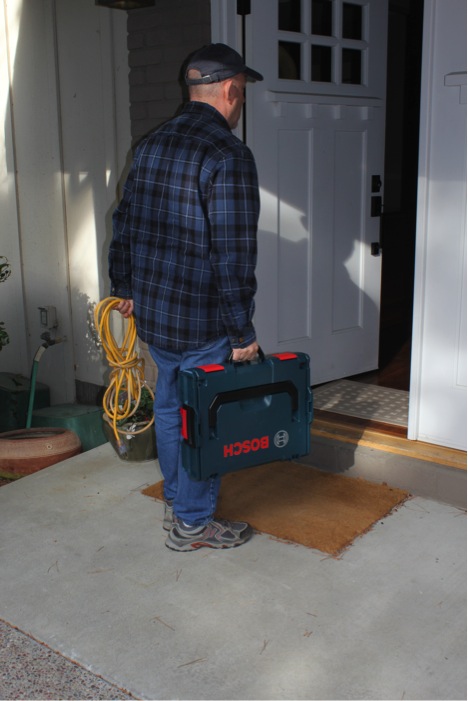
The Bosch L-Boxx System boxes latch together securely for transport of full tool sets on a dolly. Individual boxes can be unlatched and carried to the work site as needed.
Jeremy’s Job: Day 1
I met the crew of three at the site and looked things over to figure out what we were going to do that day. I introduced myself to the owner, then the guys and I spent 20 minutes picking through the truck to find whatever we could to get work started.
We had my tools and protective gear but couldn’t find enough dust masks for everyone. Only two-and-a-half pairs of work gloves. No trash bags. We had the rotary hammer, but we couldn’t find the bits. We needed drop lights since we were going to take down the light fixtures. I made a list for my run to the store. The guys started working without me.
As I peeled bills off of Jeremy’s wad to pay for the additional tools and equipment – most of which I’m sure were back in the office store room or on another job site, I found myself softly singing:
A penny for a spool of thread, a penny for a needle.
That’s the way the money goes. “Pop!” goes the weasel.
I got back to the jobsite shortly before lunchtime. Whatever progress had been made was without my help or supervision. We had to work late that night to get the demolition done.
As we cleaned up, I thought, “Maybe I should’ve used some of that wad to buy Jeremy some new toolboxes.” I could’ve spent the afternoon organizing the truck. It probably would’ve made the rest of the job go easier.
Featured image courtesy of Renjith Krishnan / FreeDigitalPhotos.net
Photos by David Frane, courtesy of Hanley Wood

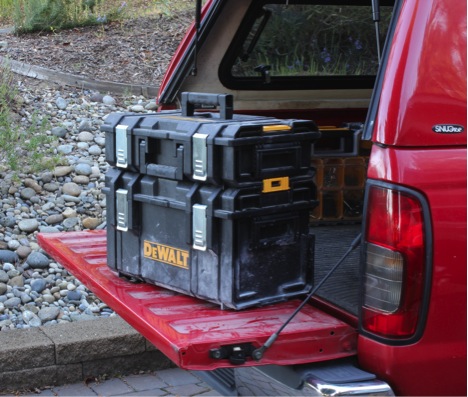
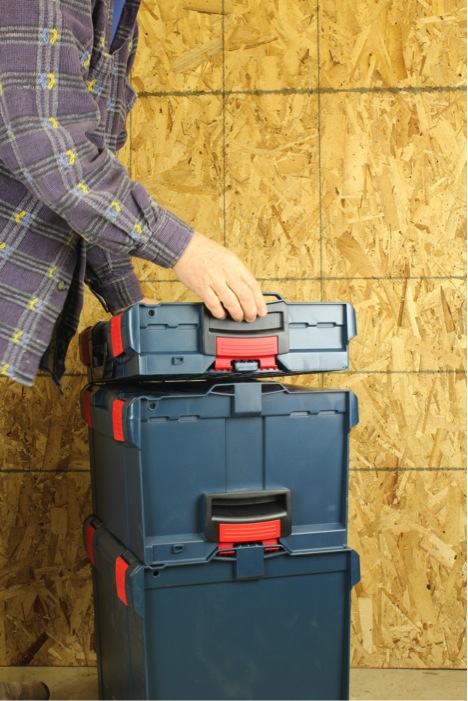



Great article. I always think people who travel to their clients, from contractors to sales people to professional organizers, can always benefit from having their tools organized and available when needed. Sometimes it’s easier said than done of course.
Absolutely! Have you ever met with someone who shuffled through their briefcase only to discover they didn’t have the necessary form? Not only do they appear unprofessional, it means they weren’t able to complete the work they were there to do!
Great topic!
I’ve been transporting tools to job sites for 20 years.
It makes a significant impression on clients and colleagues when I am able to pull out all kinds of appropriate equipment at just the right time, with no fuss.
I have experimented with many different systems, some storebought, some homemade.
Bottom line: Think carefully about the job from home, plan what tools will and may be required, and pack them ergonomically for transport, access and security.
Another reason to invest in good organization is that when leaving job site it is easier to be sure no tools are left behind!
Great tips, Alison – thanks! What type of system are you currently using?
Well Janet, I started writing you a reply.
And as my text grew and grew, I realized it’s more like a blog entry!
Oh, maybe you’d like to write another guest post for us! Please feel free to email directly any time.